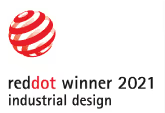The Cartographer - Visual Process Mapping
As design thinkers, we get approached by clients to help navigate uncertainty. Some of our clients are managing incredibly complex user journeys that can change based on multiple possible technology pathways. It can be challenging to sort through each of the steps in advance.
We delight our clients by visually communicating their ideas back to them. This creative exchange of mapping each step of the user journey brings out the best in our clients during our collaboration. We work with incredibly knowledgeable subject matter experts in robotic medical devices and industrial equipment. In our collaboration with the talented engineers and strategic product marketers, we have helped our clients identify ways to consolidate process steps, reduce costs, and introduce novel features. These improvements lay the foundation for a compelling new product experience.
Case Study: EpiPens
As a representative case study, we built upon a past research project exploring the engagement journey for patients experiencing allergy symptoms that might require the use of epinephrine.

The array of symptoms that the user experiences is complex and might be different between each substance exposure. In some cases, the user may choose to wait on injecting epinephrine, which can be catastrophic if symptoms advance beyond what can be managed at home. There are a number of unmet needs that have been identified through our research. In this visual process mapping exercise we focus on the need to increase the likelihood that an allergy patient will have their Epinephrine on them in case of an anaphylaxis episode.
What is an EpiPen?

How is it stored?

How is it used?


There are a number of challenges that can be identified through visual process mapping. At a high level, here are the process steps:

Anticipate need: The user anticipates the potential need for an epipen to be on hand while out of the house.
Store Epipen: The user chooses where to store the epipen nearby.
Exposed to Allergen: The user is exposed to a substance that the body’s immune system recognizes as a foreign substance.
Express Symptoms: The user’s immune system responds accordingly, resulting in a range of symptoms that could be different every time.
Self-Diagnose: The user decides if symptoms require an epipen injection, and how long to wait before injecting.
Locate Epipen: The user locates an epipen if stored nearby.
Inject Epipen: The user follows the instructions for use to inject the epinephrine.
In previous research, we developed several attitudinal user personas. For this exercise, we are inspired by Always-Ready Alex. This user persona is generally conscientious and almost obsessively well-prepared. Someone who worries about being late will plan to get to places early.
“Having an allergy means having a plan, and EpiPens are a crucial piece of that plan. It means calling restaurants in advance to make sure they can accommodate you and asking 20 questions to someone when they offer a homemade snack.” - Always-Ready Alex
With this background in mind, we can then start planning the visual process map.
Round 1 Initial empathetic storytelling: Build Alex’s story on top of the process steps in a flexible format. We like virtual whiteboards for collaborative editing.

Round 1 Edits (cyclical edits as necessary): The simple re-framing of the process steps has inspired the expertise of the client to add in supporting details that should be communicated. Note that this conversation is still in quick sticky notes to reduce risk of missing key details.

Round 2 Rough Visual Process Map: Each frame from Round 1 is given a quick digital thumbnail sketch to express the user experience and key product details. In this case, the client noted a key opportunity for improving the reliability of Always-Ready Alex to remember to bring the EpiPen with him. We generated several sketch options for solving this problem, which can then be refined into a Testable Concept Illustration, which includes a believable level of detail that could be tested with user groups.

Round 2 Edits (cyclical versioning with client): During this process we generally go through a couple iterations to refine the sketched storyboard frames. We fine-tune areas which require additional frames to describe the process, or to show newly envisioned innovation opportunities. Visual aspects are still drawn in a rough format in order to work efficiently but convey important aspects of perspective and frame composition that best suit the storyboard. In this example, we explored a few technology solutions, then had a critical “ah-ha!” moment of insight that the users might simply keep the Epipen storage solution in their shoes while at home to make sure they don’t leave home without it.

Round 3 Sketch Refinement and Finished Linework: After finalizing storyboard frames in a rough format to correctly portray the process and client vision, we then use this as a template to create the finalized version. Refinement in linework, frame perspective and workflow/story details are added to create a finished storyboard. These refined storyboards can range from vector linework to color-rendered frames in order to most effectively be used by our client.


With the completed testable concept storyboard, the images can then be used to collect feedback with stakeholders and validate that the unmet need would be fulfilled by the proposed solution. The collected stakeholder feedback then informs a product requirements document that provides direction for product development and commercialization. We have found these storyboarding techniques to be the best for industrial design to impact the stakeholder experience.




